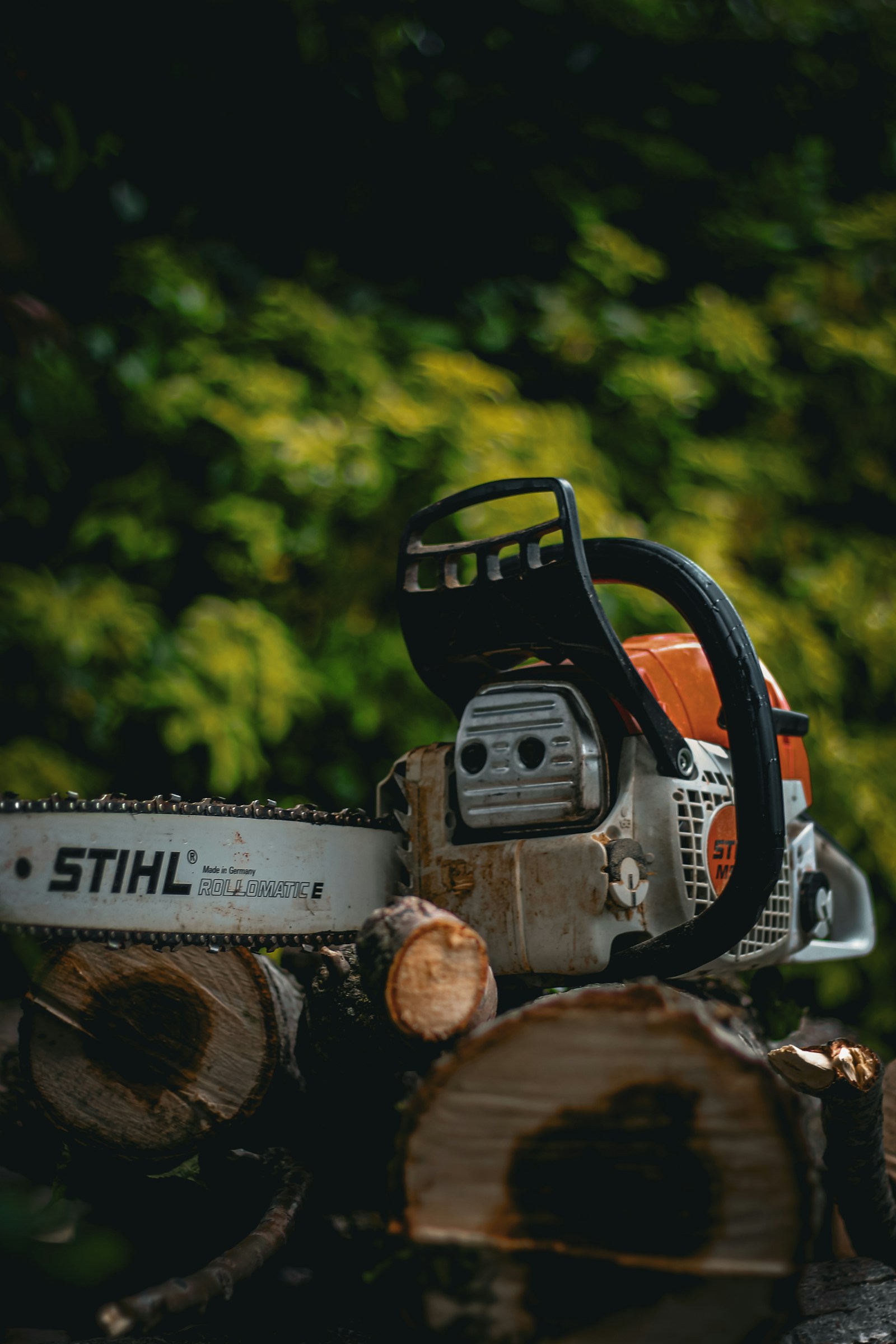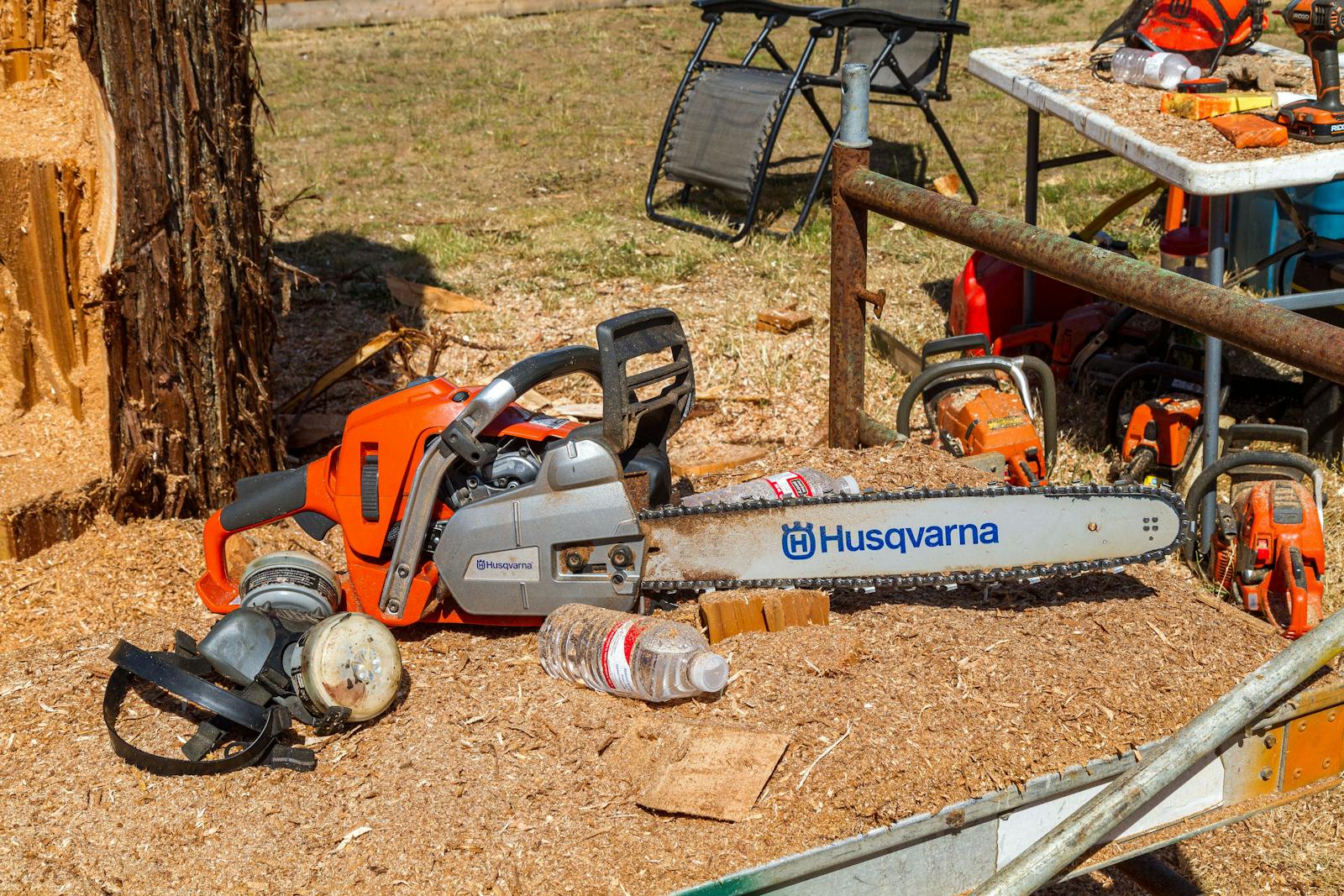What Every Rural Buyer Should Know — By Rory Hale – REALTOR®, Rural Properties & Acreages near Calgary
If you live on an acreage in Alberta, chances are you've either got a chainsaw or three, or maybe you borrow one from your neighbour who really wishes you would go buy one. Whether you're clearing a trail, cutting up storm-downed trees, or bucking firewood for the winter, having a solid saw makes life easier—and safer.
Let’s dig into two of the big dogs in the chainsaw world: STIHL vs. Husqvarna. I’ll walk you through what works best for logs around 15" thick, share my own experience (spoiler: I run STIHL), and help you make sense of fuel, oil, and maintenance needs. Because when it comes to farm life, the fewer surprises the better.
My STIHL Story (AKA Why I’m Biased, But Honest)
I’ve used STIHL saws for years. They’ve helped me clear trails, take down deadfall after windstorms, and keep the woodpile stacked before the first snow flies. My current workhorse is the MS 362, and I’ve been impressed with its reliability, easy start (even when cold), and how little fuss it gives me in maintenance.
Now, depending on the size of your property, you may want a couple of saws, a bigger one that falls larger trees and is great for bucking into logs, and a smaller one for liming and cutting brush. When I moved out to the country, I met a neighbour who had four saws, which seemed crazy at the time, but different saws for different purposes, and living rural, it never hurts to have a backup, for when something breaks.
That being said, I now have three saws and would never turn down a chance to buy a good used backup saw.
Now I love my Stihl saws, and that neighbour I talked about, he loves Husqvarna, I’m not saying he is wrong. (But I think he is, haha). I had some, let’s call it bad luck with a Husqvarna, that was my first saw. I had a very frustrating day with the new saw and never went back.
Husqvarna has a great reputation for hardworking, long-lasting equipment, so don’t discount them. It’s a personal preference thing. Ask my neighbour.
Which Saw for 15" Logs?

If you're dealing with trees around 15" in diameter (a pretty typical job around the foothills), here are a few chainsaws that get the job done. Just remember, if it says residential, that’s for city folks.
STIHL
https://www.stihl.ca/en/c/chainsaws-98176
MS 271 Farm Boss – 50.2 cc, 3.49 hp. Affordable and reliable for farm use.
MS 291 – 55.5 cc, a bit more grunt for heavy use.
MS 362 – 59.0 cc, pro-level saw. More power, more weight, more cost. My personal go-to.
Husqvarna
https://www.husqvarna.com/ca-en/chainsaws/
455 Rancher – 55.5 cc, 3.49 hp. Great homeowner/pro blend.
460 Rancher – 60.3 cc, more torque, better for larger hardwood jobs.
I would go with this one, like my neibour
Either brand will do the job, but STIHL often edges ahead in cold starts and simplicity of maintenance.
We also own a couple of smaller saws for limbing, you have to be careful with smaller saws, they arnt’t meant to run all day and you can burn them out. But it’s sure a lot easier on the shoulders cutting branches with an MS 211 than with my big MS 362.
Fuel: Mix it Right, or Buy Pre-Mixed
Fuel is important with smaller engines; the right octane will not only give you better performance, but also help prevent plugs and carburetor from fouling, and will extend the life of your saw.
Use premium fuel (at least 89 octane, ethanol-free if you can find it).
Mix with high-quality 2-stroke oil (50:1 ratio), or buy STIHL Motomix or Husqvarna XP PreMix if you want zero hassle.
Farm tip: Mixing your own is cheaper but easier to screw up. If you don’t use your saw often, go with pre-mix.

Chain Oil: Slippery Business
Your bar and chain need good oil to stay cool and last longer.
STIHL Platinum – designed for heavy-duty cutting
Husqvarna X-Guard – Works well even in cold weather.
Any premium tacky oil will do. I know a couple of people who use old motor oil. I don't recommend that.
Maintenance Schedule
Here’s a simple timeline to keep your saw purring:
Every use: Check chain tension, bar oil level, and clean out gunk.
Every 5 hours of use: Clean air filter, inspect spark plug.
Every 10-15 hours: Sharpen the chain, flip the bar. (I sharpen my chain after every heavy use)
Annually: Full tune-up at a shop. Replace filters and spark plug.
If it sounds like a lot, it really isn’t. It takes 5 minutes before you cut to save hours later. I have also taken up using the Stihl 2 in 1 Easy File Chainsaw Chain Sharpener . It is simple to use and does a decent job keeping the saw sharp when you don’t have time to do a detailed sharpening job
Don’t Forget the Safety Gear
I can hear the sigh, but I have had a couple of near misses and was glad I was wearing gear. Safety best practices win out every time.
Pay attention, a big chainsaw can do a lot of damage quickly
Know who and what is around you
Use your chain lock when you finish a cut
Always have a properly adjusted chain; a loose one is very dangerous
Don’t saw into the ground or rocks. Sparks and debris are not good for the saw, or you
Equipment
Ear protection and eye protection ALWAYS!
Amazon's top-rated ear protection https://amzn.to/4k1mWeo
Chainsaw gloves with cut protection (good gloves saved my hand once)
Chainsaw chaps (Kevlar) - heavy pants at the least
First aid kit (don’t wait till you need it!)
Where to Buy or Service in Alberta
Local Vendors I Trust:
Bumper to Bumper in Cremona - great guys but thier pretty busy
Murf’s in Sundre– I’m always amazed at how much stuff they pack in that little building
Alberta Forest and Garden in Calgary - 1220 Meridian Road NE
They have everything and have good pricing
Find a Dealer:
STIHL: https://www.stihl.ca/en/dealer-locator.aspx
Husqvarna: https://www.husqvarna.com/ca-en/dealers/
Farm Tip:
Anyone who hasn’t used a saw much: Never leave it in the sun, unless you want your saw day to be over. It won’t start if it gets too hot.
Store the saw in the shade or in a case when not in use.
If it won’t start hot, try cracking the gas cap and waiting 5–10 minutes.
Use fresh, ethanol-free fuel—less prone to vaporizing.
1. Vapour Lock
Fuel in the carburetor and lines can partially vaporize due to heat.
This creates air bubbles, disrupting fuel flow.
Result: You pull and pull, but it’s not getting proper fuel delivery.
🛢 2. Fuel Expansion and Pressure
Heat causes fuel to expand inside the tank, building pressure.
When you open the gas cap, you might even hear a hiss.
If not vented properly, it can flood the carb or cause inconsistent fueling.
🧠 3. Hot Engine + Compression = Tough Pull
If you’re restarting a chainsaw that was just running, the engine is already hot.
Hot engines can have increased compression, making the pull-start harder.
Combine this with any vapour lock and it's a frustrating combo.
Final Thoughts
Chainsaws are like trucks—you’ll find folks who are diehard loyal to one brand or the other. I’ve had great luck with STIHL, but Husqvarna deserves respect too.
Do your homework, test a few if you can, and think about how often you’ll use it. If you need help picking one or just want to talk tools and trees, shoot me a message—or check out the properties I list where having a saw in the truck is just part of the lifestyle.
Stay safe and keep your chain sharp.
Note: This post may contain affiliate links. I may earn a small commission if you purchase through these, at no cost to you. It helps keep the blog running and the chains sharp.


